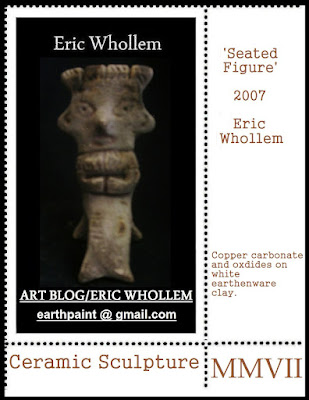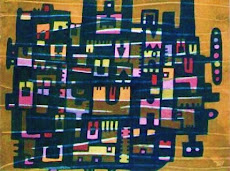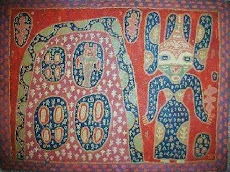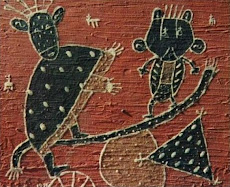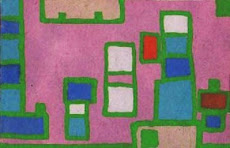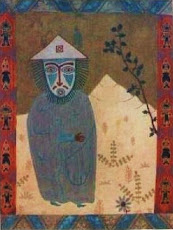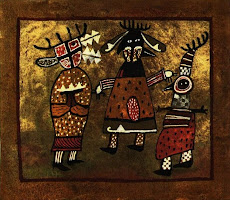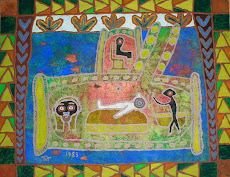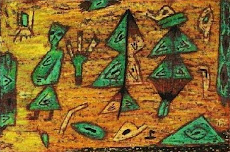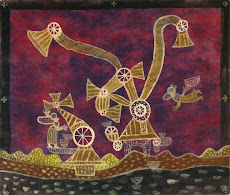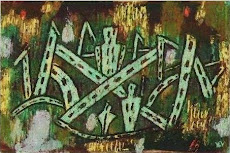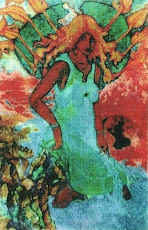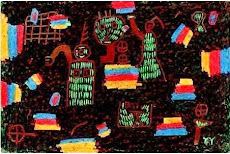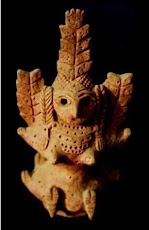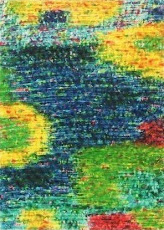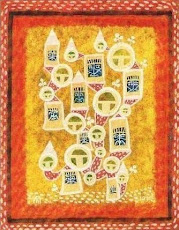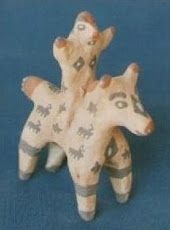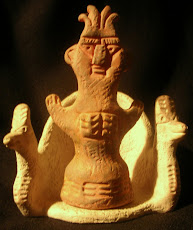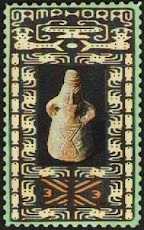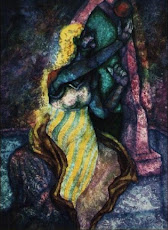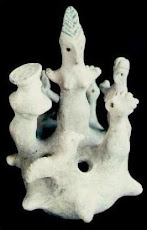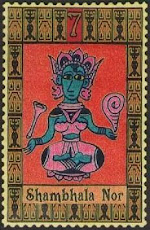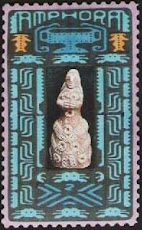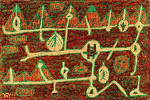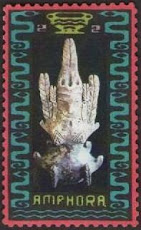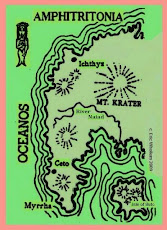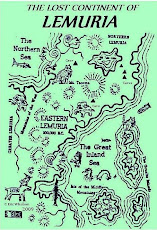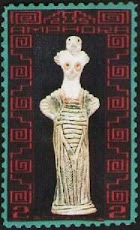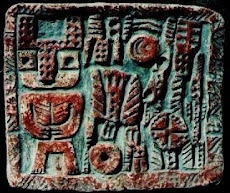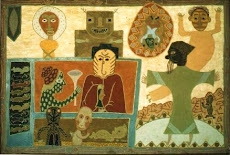Vila
2006
by Eric Whollem
oxides on white earthenware clay
PHOTO COPYRIGHT BY THE ARTIST
CLICK ON IMAGE TO ENLARGE
Mermaids of the Adriatic Sea
Vila is the name given to the mermaid in that oceanic realm
that separates Italy from the Balkan region north of Greece.
'Vir' means 'pool' in the Balkans. Lepenski Vir, for example, is
the oldest city site on the European mainland. There are large
stone sculptures found there with fish-like eyes that recall the
disc-eyed aquatic Goddesses of Mesopotamia. Vir literally means
'whirlpool.' A whirlpool is found at Lepenski Vir and also many
large fish skeletons, which archaeologists such as Marija Gimbutas
conjecture to be remains of special offerings to the spirits of
the spring.
Students of Eastern European archaeology will probably note the
distinctive ancient Eastern European flavor to my Vila sculpture.
See Marija Gimbuta's book, 'Language of the Goddess.'
'Morska vila' means 'little mermaid.'
VILA AND BIRD WOMAN
Some readers may note that my image of Vila partakes of the
iconography typical of Bird Woman, the Eastern European
Goddess archetype. Her pinched beaked nose is an ancient
symbol of Bird Woman, seen on innumerable old sculptures.
This video shows some of my Bird Woman sculptures.
Mermaids have always been linked to the birds. For example,
Aphrodite in her three aspects of Pandemos, Marina, and Urania,
has three corresponding birds for each of her Triple Goddess
functions: the dove for her Virgin aspect, the swallow for her
Matron aspect, and the crow for her Crone aspect.
Naiad
2004
by Eric Whollem
oxides on white earthenware clay
Private collection
12"
PHOTO COPYRIGHT BY THE ARTIST
CLICK ON IMAGE TO ENLARGE
The Sirens from Homer's Odyssey, though actually Naiads, or
freshwater spirits, are linked in many interpretations to the
Nereids, or Greek mermaids of the salt sea. This interpretation
may be off a bit, as the Sirens were birds with women's heads,
at least in artistic conventions over the centuries. In this we
see the Sirens linked more to birds than to fish.
The Selkies of Celtic lore are shape shifters, and can take on
any form of animal body. Morrigan, the Queen of the Sea, for
example was linked to the crows, insofar as she was a psycho-
pomp, or shamaness of the deceased.
The Greek God Hermes was said to fly as a cormorant above the
sea. He is also attributed with having had wings on his ankles.
Were these wings actually his merman fins? This interpretation
is not totally far afield as mermaids in their depictions in art for
many centuries and in many cultures, have both wings as well as
flippers. This is true of both Celtic and Indonesian traditions.
Water, symbolic of the plane of emotional vibrations, and air,
the symbol of the plane of spiritual flight, are thus brought
together in my image of Vila, who is both Bird Woman and
Mermaid Goddess.
BELOW ARE A SOME VIDEOS THAT
DEAL WITH THE TOPIC OF MERMAIDS
A mermaid stamp art video by Eric Whollem, 2011
A video that presents more of my Mermaid and Goddess art
in faux postage stamp format.
See my posts on ANTHROPOLOGY on this link:
Gray Seated Figure
2010
by Eric Whollem
POSTER STAMP COPYRIGHT BY THE ARTIST
My CERAMIC SCULPTURES may be found here:

Intuitive Beings
1987
by Eric Whollem
mixed media on paper
COPYRIGHT BY THE ARTIST
Many of my paintings, such as 'Intuitive Beings,' shown above, are among my two dimensional FIGURATIVE ABSTRACTIONS. See more of my figurative expressionism here:
Check out this link on MERMAIDS if you would care to peruse my artistic approaches to this universal subject:
Those interested in the topic of the GODDESS should see:
*
MYTHOGRAPHIC ART
Metaphysical art
Mermaids
Mythology
*


